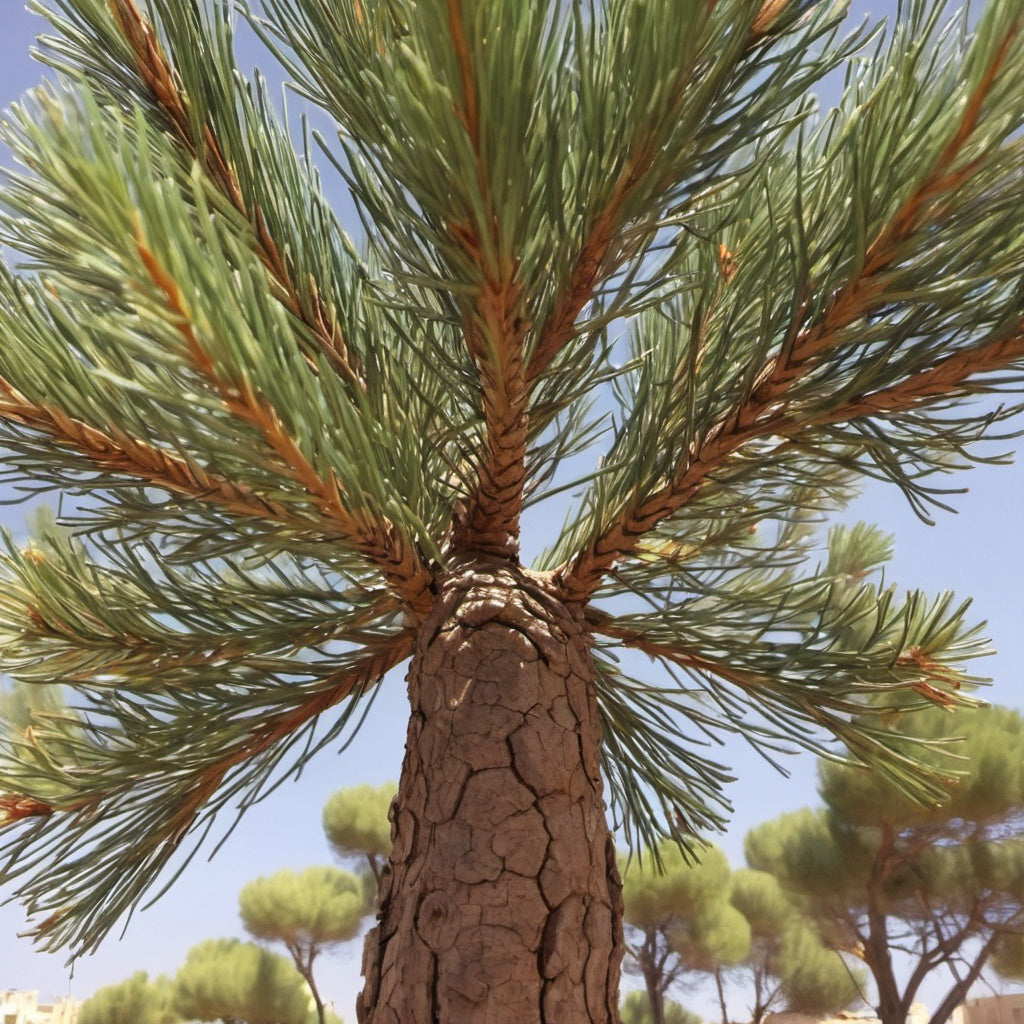Aleppo Pine Tree Seeds
Aleppo Pine Tree Seeds
Couldn't load pickup availability
Aleppo Pine Tree Seeds
(Pinus halepensis)
Pinus halepensis, commonly known as the Aleppo Pine, is a species of pine tree native to the Mediterranean region.
Botanical Features
- Family: Pinaceae
- Appearance: It’s a medium-sized evergreen tree, typically growing to 15–25 meters (50–82 feet) in height, with a relatively slender trunk and a spreading, irregular crown.
- Bark: The bark is gray to reddish-brown, becoming fissured and flaky with age.
- Leaves (Needles): The needles are thin, 6–12 cm long, light green, and grow in pairs (a key identifier).
- Cones: The cones are small, 7–12 cm in length, and have a characteristic asymmetrical shape. They mature over 2–3 years and can remain closed on the tree for several years.
Habitat
- Native to the Mediterranean Basin, including southern Europe, North Africa, and parts of the Levant.
- It thrives in hot, dry climates and is highly drought-tolerant, often found in lowland areas, rocky hillsides, and poor soils.
Ecological Role
- Plays a key role in stabilizing soils, especially in degraded landscapes.
- Resilient to wildfires; the cones open post-fire, releasing seeds for regeneration.
- Supports Mediterranean wildlife by providing habitat and food (e.g., seeds for birds and rodents).
Cultural & Economic Importance
- Historically valued for its resin and timber, though its wood is soft and primarily used for construction, fuel, and paper production.
- Widely planted as an ornamental tree and for reforestation in arid climates due to its hardiness.
- It is associated with Greek and Roman mythology and Mediterranean landscapes.
Notable Uses
- Resin collected from the Aleppo Pine tree is used to produce turpentine and is part of traditional wine-making, such as retsina in Greece.
Adaptations
- Thrives in calcareous soils and tolerates poor nutrient conditions.
- Its deep root system and waxy needles allow it to survive prolonged drought.
Zones: 8 to 10
Germination Range: 60-80%
Stratification Requirement: No pre-treatment required. Seed germinates best when in the presence of light so lightly cover when sowing.
Planting Instructions:
Prepare a well-draining planting medium, such as a mix of sand, peat, and perlite, and fill small pots or seed trays. Sow the seeds about 1-2 centimeters deep and cover them lightly with soil. Water gently to moisten the soil but avoid waterlogging. Place the pots in a warm, sunny location or under grow lights, maintaining a temperature of 18-24°C (65-75°F).
Keep the soil consistently moist but not saturated during the germination process, which usually takes 2-4 weeks. Once the seedlings emerge, ensure they receive plenty of light and gradually acclimate them to outdoor conditions if they are to be planted outdoors. Transplant the young saplings to their permanent location when they are strong enough, ensuring the site has well-draining soil and full sun exposure. Water regularly during the first year to help the saplings establish their roots.
Share


